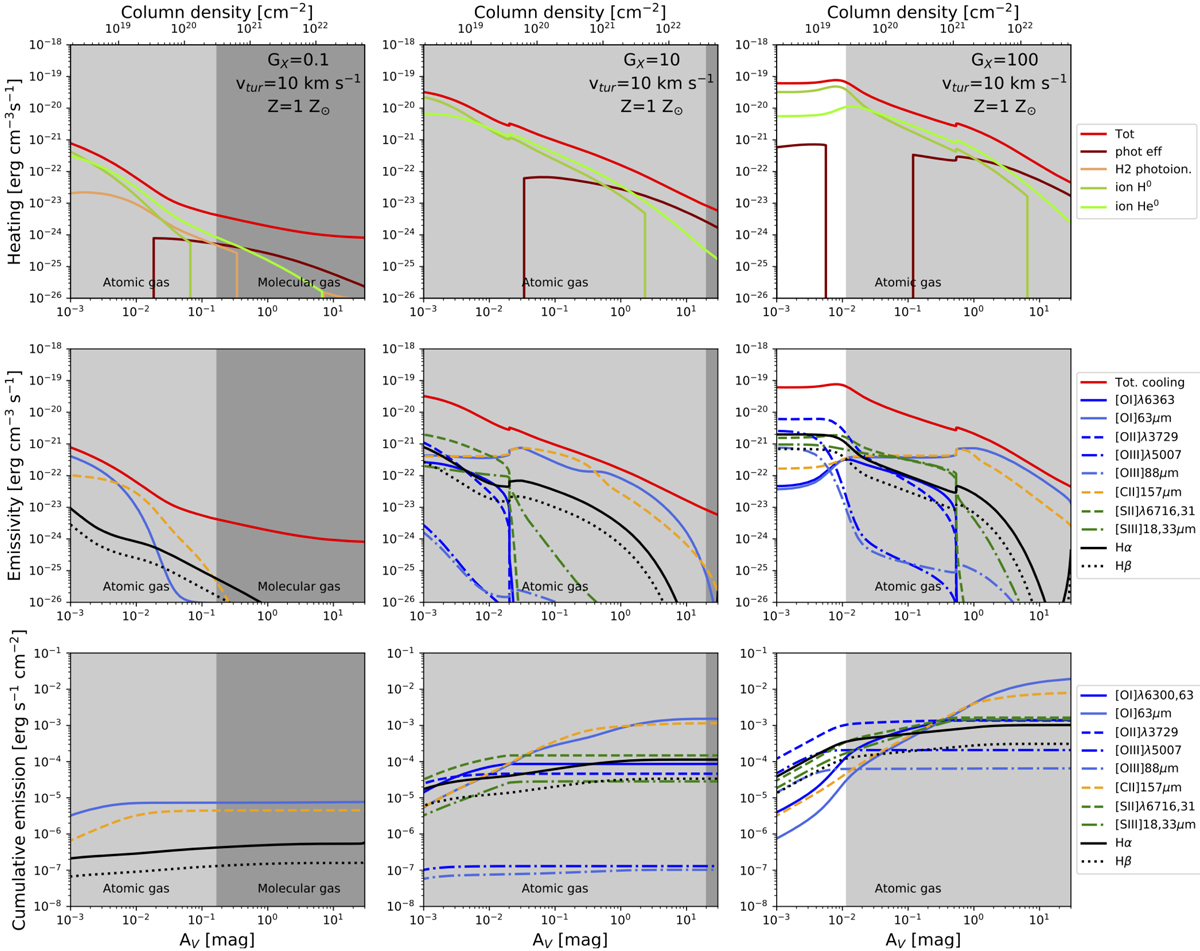Fig. 4.

Effects of the radiation field intensity on heating mechanisms and line emission. Heating and cooling mechanisms as a function of AV for the same models as those in Fig. 3. Top row: heating mechanisms. CLOUDY provides the first five main heating mechanisms as output. If one of the heating mechanisms is not one of these five for some values of AV, the mechanism is not shown in the figure. This is the reason for some vertical straight lines in the panels. Second row: emissivity of carbon, oxygen, and sulphur lines, Hα and Hβ. Bottom row: cumulative emission of carbon, oxygen, and sulphur lines, Hα and Hβ. The cumulative emission values are theoretical, and some of these values are too low to be detected by the instruments. The instrumental limitations mean that access is only given to the brightest values, thus to the emission arising from the denser parts of the cloud. It is important to remember that by comparing the observations with this predicted line emission we only constrain the properties of the denser phase of the cloud.
Current usage metrics show cumulative count of Article Views (full-text article views including HTML views, PDF and ePub downloads, according to the available data) and Abstracts Views on Vision4Press platform.
Data correspond to usage on the plateform after 2015. The current usage metrics is available 48-96 hours after online publication and is updated daily on week days.
Initial download of the metrics may take a while.


